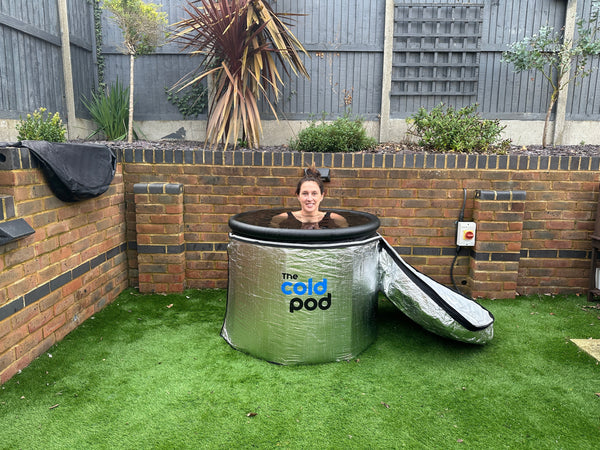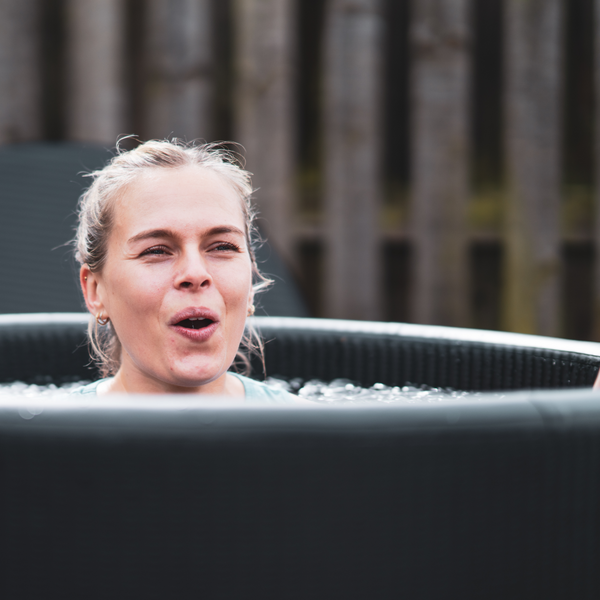Introduction
In the world of wellness and alternative therapies, the age-old practice of immersing oneself in water, whether cold or hot, has garnered considerable attention. Cold water immersion and hot water immersion, each with its own unique set of proponents and enthusiasts, have claimed a wide range of health benefits. From the ancient traditions of the Finnish sauna to the invigorating cold plunges enjoyed by polar bear enthusiasts, these contrasting approaches to water therapy have captivated the interest of individuals seeking to enhance their well-being.
In this exploration of cold-water immersion vs. hot water immersion, we embark on a journey to decipher the science behind these practices and unravel the mysteries of their effects on the human body. While the concept of plunging into icy lakes or basking in steamy baths might seem archaic, these therapies have experienced a resurgence in popularity in recent times. From athletes seeking enhanced recovery to those in pursuit of stress relief and improved circulation, there is growing curiosity about the potential benefits of these age-old rituals.
The primary aim of this blog is to dissect the merits and demerits of cold-water immersion and hot water immersion, and in doing so, assist you in determining which of these therapies might be better suited to your unique needs and preferences. Before we dive headfirst into the intricacies of each practice, let us first set the stage by delving into their historical roots and modern-day resurgence, framing the debate that follows. So, dear readers, prepare to embark on a journey into the depths of cold and hot water therapy, as we seek to answer the burning question: which is the superior immersion experience?
The Science Behind Cold Water Immersion
Cold water immersion, often colloquially referred to as “cold therapy” or “ice baths,” is a practice that involves submerging oneself in cold water, typically with temperatures ranging from 0 to 15 degrees Celsius (32 to 59 degrees Fahrenheit). While this might sound like a chilly ordeal, the science behind cold water exposure reveals that it can offer numerous physiological benefits.
How Cold-Water Immersion Works on the Body
To comprehend the effects of cold-water immersion, it’s crucial to understand how the body reacts when exposed to cold temperatures. When you immerse yourself in cold water, several physiological responses are triggered:
Physiological Responses to Cold Water Immersion
- Vasoconstriction: One of the immediate responses to cold water exposure is vasoconstriction, which refers to the narrowing of blood vessels. This happens as the body tries to conserve heat and prevent heat loss. Vasoconstriction primarily occurs in the peripheral blood vessels, such as those in your limbs, fingers, and toes.
- Increased Heart Rate: As a result of vasoconstriction, your heart rate tends to increase to maintain adequate blood flow and circulation to vital organs. This accelerated heart rate is part of the body’s effort to maintain core body temperature.
- Release of Endorphins: Cold water immersion has been associated with the release of endorphins, often referred to as “feel-good” hormones. These endorphins can contribute to a sense of well-being and act as natural painkillers, which might explain the pleasurable feeling some individuals experience during and after cold water exposure.
Potential Benefits of Cold-Water Immersion
Now that we’ve examined the physiological responses, let’s delve into the potential benefits of cold-water immersion:
- Pain Relief: Cold water exposure is frequently used to alleviate muscle soreness and inflammation, making it a popular choice among athletes and fitness enthusiasts for post-workout recovery. The cold temperature helps reduce inflammation and numb pain receptors.
- Improved Circulation: While cold water initially causes vasoconstriction, when you exit the water, there is often a rebound effect known as vasodilation, where blood vessels expand. This can lead to improved circulation and, in some cases, help alleviate conditions related to poor blood flow.
- Enhanced Recovery: Cold water immersion is believed to expedite recovery from strenuous physical activities by reducing muscle damage and inflammation. Athletes often use it as a tool to recover faster and perform better in subsequent workouts or competitions.
Risks and Precautions Associated with Cold Water Immersion
While cold water exposure offers several potential benefits, it’s essential to be aware of the risks and take necessary precautions:
- Hypothermia: Prolonged exposure to very cold water can lead to hypothermia, a potentially life-threatening condition characterised by a dangerously low core body temperature. It’s crucial to limit the duration of cold-water immersion and monitor your body’s response carefully.
- Cold Shock Response: When you first enter cold water, you may experience an initial “cold shock response” characterised by gasping, rapid breathing, and an increase in heart rate. This can be dangerous if not managed properly, especially if you’re in deep water or unable to swim.
In conclusion, cold water exposure can be a powerful tool for those seeking pain relief, improved circulation, and enhanced recovery. However, it must be approached with caution, and individual tolerance levels should be considered.
The Science Behind Hot Water Immersion
Hot water immersion, often associated with the relaxation of a warm bath or a soothing soak in a hot tub, provides a stark contrast to its cold-water counterpart. While cold water immersion primarily triggers vasoconstriction and physiological responses aimed at conserving heat, hot water immersion, on the other hand, leads to vasodilation and a different set of physiological reactions.
How Hot Water Immersion Works on the Body
Understanding the science behind hot water immersion requires an appreciation of how the body responds to elevated temperatures. When you immerse yourself in hot water, which typically ranges from 37 to 40 degrees Celsius (98.6 to 104 degrees Fahrenheit), several physiological responses come into play:
Physiological Responses to Hot Water Immersion
- Vasodilation: The heat from hot water causes blood vessels to dilate or expand, which results in increased blood flow to the skin’s surface. This process not only aids in heat dissipation but also contributes to a sense of warmth and relaxation.
- Muscle Relaxation: Hot water has a powerful calming effect on muscles. Because the heat helps to relieve muscle tension, hot water immersion is a popular alternative for reducing muscle tightness and stiffness and boosting overall relaxation.
- Stress Reduction: The soothing sensation of hot water relaxes the nervous system. Because this relaxation response can help reduce tension and anxiety, hot water exposure is an excellent way to unwind after a long day.
Potential Benefits of Hot Water Immersion
Now that we’ve examined the physiological responses, let’s explore the potential benefits of hot water immersion:
- Pain Relief: Hot water immersion can be effective for alleviating various types of pain, including joint pain, arthritis, and muscle soreness. The warmth of the water helps to relax muscles and reduce pain perception.
- Stress Reduction: The relaxation induced by hot water immersion can be highly beneficial for reducing stress and promoting mental well-being. Many individuals use hot baths or hot tubs as a form of relaxation therapy.
- Improved Sleep: A warm bath before bedtime can help improve sleep quality. The relaxation of muscles and the drop in body temperature after exiting the hot water can promote a more restful night’s sleep.
Risks and Precautions Associated with Hot Water Immersion
While hot water immersion offers numerous benefits, it’s essential to be aware of potential risks and take precautions:
- Overheating: Prolonged exposure to excessively hot water can lead to overheating, dehydration, and even heat exhaustion or heatstroke. It’s crucial to maintain a comfortable water temperature and stay hydrated while immersing in hot water.
- Dehydration: Hot water immersion can cause sweating, leading to fluid loss and potential dehydration. Ensure you drink enough water before and after your hot water soak to stay adequately hydrated.
In summary, hot water immersion offers a range of benefits, from pain relief and muscle relaxation to stress reduction and improved sleep. It provides a contrasting experience to cold water immersion and can be a valuable addition to your wellness routine. As we continue our exploration, we’ll compare the advantages and disadvantages of cold and hot water immersion, helping you make an informed decision about which therapy aligns best with your needs and preferences.
Comparing Cold and Hot Water Immersion
Now that we’ve delved into the science behind both cold and hot water immersion, it’s time to compare and contrast these contrasting therapies. Each has its own unique set of benefits and drawbacks, making them suitable for different situations and individuals.
Different Goals and Purposes
Cold Water Immersion:
- Goal: Cold water exposure is often sought for its invigorating and stimulating effects. It’s commonly used by athletes and fitness enthusiasts for post-workout recovery, as it can help reduce muscle soreness and inflammation.
- Purpose: The primary purpose of cold-water immersion is to promote rapid recovery, boost circulation, and provide a refreshing experience.
Hot Water Immersion:
- Goal: Hot water immersion, on the other hand, is sought for its relaxation and stress-reduction benefits. It’s frequently used to unwind, de-stress, and soothe both body and mind.
- Purpose: The primary purpose of hot water immersion is to relax muscles, alleviate tension, and provide a calming and rejuvenating experience.
When to Choose Cold Water Immersion
- After Intense Physical Activity: If you’re an athlete or engage in strenuous workouts, cold water immersion may be your go-to choice for quick recovery and reducing muscle soreness.
- When You Need an Energy Boost: Cold water exposure can provide an energy-boosting effect due to the release of endorphins and increased alertness.
When to Choose Hot Water Immersion
- For Stress Relief: When you’re looking to unwind and alleviate stress, hot water immersion offers a soothing and tranquil experience.
- Before Sleep: Taking a warm bath before bedtime can improve sleep quality and help you relax for a restful night.
Situations Where Neither Therapy May Be Suitable
It’s important to note that both cold and hot water immersion may not be suitable for everyone or in every circumstance. Consider the following situations:
- Health Conditions: Individuals with certain medical conditions, such as cardiovascular issues, diabetes, or skin sensitivities, should consult with a healthcare professional before engaging in either therapy.
- Extreme Temperatures: In extreme weather conditions, exposing yourself to cold water can be risky, leading to hypothermia or cold-related injuries. Similarly, excessively hot water can lead to overheating and dehydration.
Personal Preferences and Individual Differences
Ultimately, the choice between cold and hot water immersion comes down to personal preferences and individual differences. Some people may find cold water invigorating and beneficial for recovery, while others may prefer the relaxation and stress-reduction benefits of hot water. It’s essential to listen to your body and choose the therapy that aligns best with your needs and goals.
In conclusion, cold and hot water exposure offer distinct experiences and potential benefits. By understanding the science behind these therapies and considering your specific objectives, you can make an informed decision about which one is better suited to enhance your well-being. Whether you opt for the invigorating chill of cold water or the comforting warmth of hot water, both can play a valuable role in your wellness journey.
Conclusion
As we draw the curtains on our exploration of cold-water immersion versus hot water immersion, it becomes clear that each of these therapies possesses a unique set of advantages and drawbacks. The decision of whether to embrace the bracing cold or bask in the comforting warmth ultimately rests in your hands, guided by your individual goals and preferences.
Recap of Key Points
Throughout this journey, we’ve uncovered the intriguing science behind both cold and hot water immersion:
- Cold water immersion triggers vasoconstriction, increased heart rate, and the release of endorphins. It offers benefits such as pain relief, improved circulation, and enhanced recovery but requires caution to avoid hypothermia and the cold shock response.
- Hot water immersion leads to vasodilation, muscle relaxation, and stress reduction. Its potential benefits include pain relief, stress reduction, and improved sleep quality, but it necessitates precautions to prevent overheating and dehydration.
The Power of Personal Choice
The beauty of these therapies lies in their versatility, catering to a wide range of needs. Cold water immersion may be your ally in post-workout recovery, while hot water immersion might be your sanctuary for stress relief. But remember, it’s not a one-size-fits-all scenario.
Consultation and Caution
Before embarking on either of these immersion journeys, it’s vital to consult with a healthcare professional, especially if you have underlying medical conditions or concerns. Your safety and well-being should always take precedence.
Embrace the Experience
In your quest for well-being, consider experimenting with both cold and hot water immersion. They offer unique sensations and potential benefits that can enrich your life. The invigorating plunge into icy waters or the soothing soak in a hot bath can become cherished moments of self-care and rejuvenation.
The Ongoing Debate
As we conclude our exploration, the debate over which is superior – cold water immersion or hot water immersion – remains a matter of personal choice and circumstance. There is no one-size-fits-all answer, and your journey towards better health and wellness is uniquely yours to shape.
In this ever-evolving world of wellness practices, embrace the opportunity to discover what works best for you. Whether you find solace in the crisp embrace of cold water or the comforting warmth of hot water, these immersion therapies can be valuable tools on your path to holistic well-being.
So, as you continue your journey, remember that the power to decide which immersion experience is better for you lies within you. Embrace the water, embrace the moment, and may your choices lead you towards a happier, healthier, and more invigorated life.







